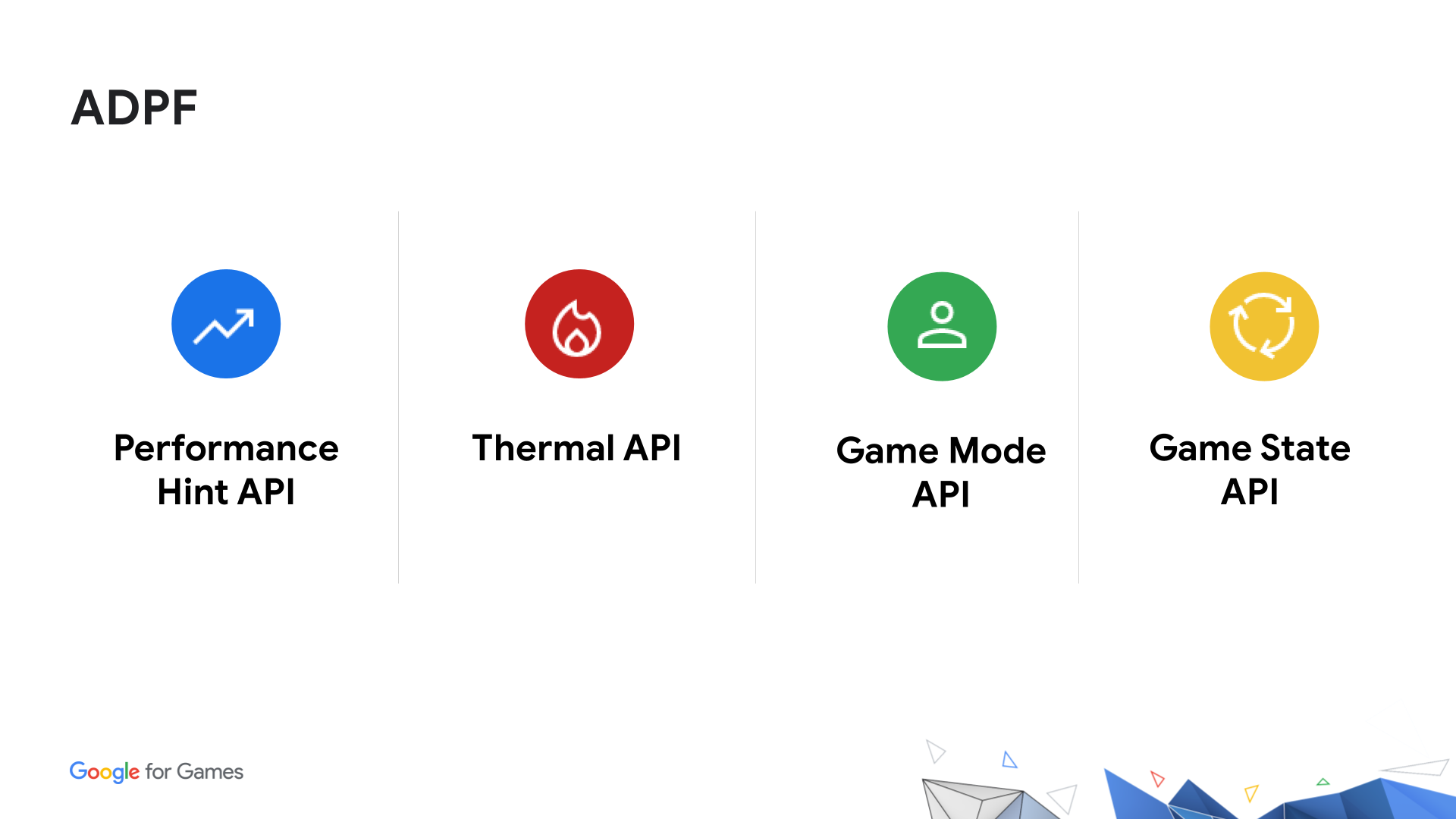Application exemple
L'application exemple ADPF illustre l'utilisation de base de l'API ADPF.

L'exemple affiche l'état thermique de l'appareil à l'aide de l'API getThermalHeadroom ADPF et de l'API état thermique. L'application modifie également la charge de travail de manière dynamique en fonction de la marge thermique et de l'API Performance Hint Manager afin de contrôler les performances du thread de rendu.
Atelier de programmation
L'atelier de programmation Integrating Adaptability Features Into Your C++ Game (Intégrer des fonctionnalités d'adaptabilité dans votre jeu C++) vous explique comment intégrer les fonctionnalités ADPF à votre jeu en suivant des étapes simples que vous pouvez suivre à votre rythme. À la fin de cet atelier de programmation, vous aurez intégré les fonctionnalités suivantes et vous comprendrez mieux leurs fonctionnalités:
- API Thermal: écoutez l'état thermique de l'appareil et réagissez avant qu'il ne passe en mode de limitation thermique.
- API Game Mode: identifiez les préférences d'optimisation du joueur (maximiser les performances ou préserver la batterie) et ajustez en conséquence.
- API Game State: indiquez au système l'état de votre jeu (chargement, lecture, UI, etc.). Le système peut alors ajuster les ressources en conséquence (booster les E/S, ou le processeur, le GPU, etc.).
- API Performance Hint: indiquez au système votre modèle de thread et votre charge de travail afin qu'il puisse allouer les ressources en conséquence.

Témoignages de développeurs
Découvrez comment les développeurs de jeux ont amélioré la stabilité de leurs FPS et optimisé leur consommation d'énergie à l'aide des API Adaptability dans ces histoires de réussite de développeurs.
- Kakao Games a augmenté la stabilité des FPS à 96% grâce à Android Adaptability
- Gameloft réduit la consommation d'énergie de l'appareil de 70%, ce qui allonge la durée de jeu de 35% grâce à l'API Game Mode.
- Mise à jour d'Android Game Development Kit (AGDK) : fonctionnalités d'adaptabilité et de performances
- GDC Vault – Google Developer Summit: Améliorer les performances des jeux avec Android Dynamic Performance Framework
- MediaTek améliore les performances dynamiques des SoC Android
- NCSoft Lineage W améliore les performances soutenues et évite le throttling thermique grâce à ADPF
- Premiers pas avec Android Dynamic Performance Framework (ADPF) dans Unreal Engine avec ARM
- Netmarble Games: optimiser les performances avec ADPF

